Constant reinvention with own design and development solutions
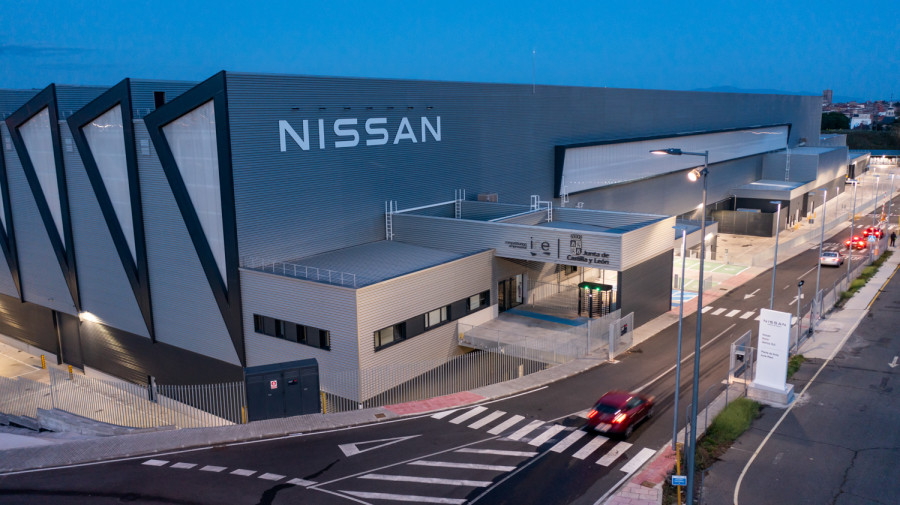
To understand the configuration of the Nissan plant's production processes, those responsible for its layout visited all the European plants of the Renault Nissan Mitsubishi Alliance to adapt their new processes to the different requirements. Making the most of the existing industrial surface and maintaining areas such as the cataphoresis plant for metal parts, Nissan Ávila has undertaken an astonishing transformation, the greatest exponent of which is found in the new shop in which two activities coexist: “the formation of sheet metal spare parts. and plastic injection for bumpers,” says Javier Amador González, responsible for Business Development.
In the new shop, partially enabled during the COVID pandemic, a modern line consisting of five presses stands out, fully automated and prepared to stamp pieces in both steel and aluminum, with pieces with
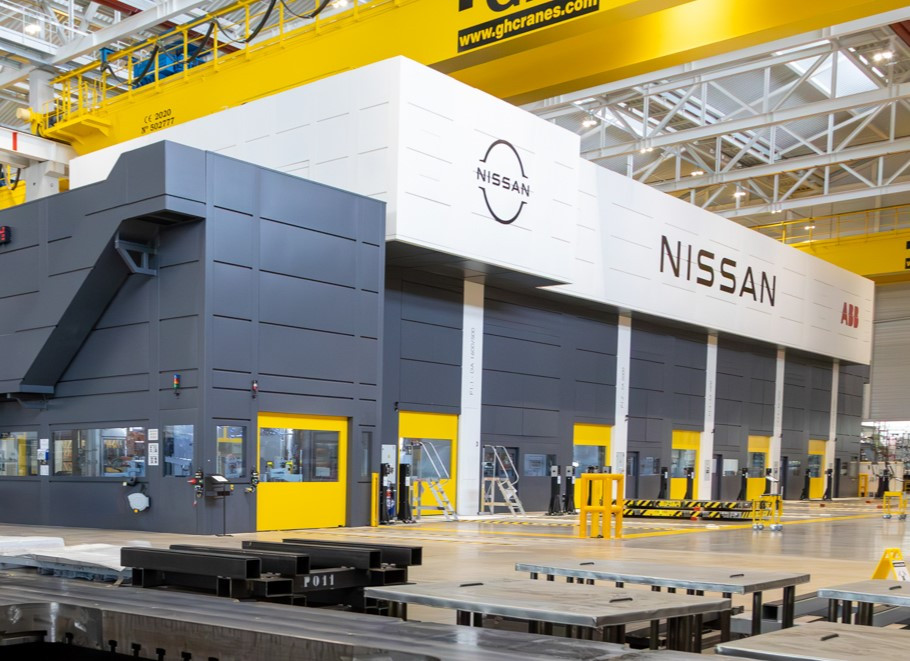
thicknesses ranging from 0.5 to 4 millimeters. González comments that “of the five presses, there is one double-acting press of 1,500 Tn; the second of simple defect of 2,000 tons with hydraulic cushion; and three standard 1,000 Tn single-acting presses, which can work according to the imperial measurement system in the case of Nissan and the metric system for Renault. The line is designed to work with all types of formats for external body parts ('skin' or inner) and structural parts (outer). It is designed for a high rotation of tool changes.
The line receives the raw material in predefined blankings to waste as little material as possible. The first press release occupies 97% of the base format. All scrap or excess material is sent to Nissan's foundry and machining plant in Corrales de Buelna (Cantabria) in a circular economy process. Sheets of different thicknesses and compositions are handled on the line and transfers between presses are carried out by robots. The high level of acoustic insulation and low surface vibration stands out thanks to the damping of the base of the presses.
This line is supported by an expert die-making team that adjusts around three or four references a day. A surface has been made available for a second stamping line, in case it were necessary in the future. In the last three years, the warehouse has housed more than 500 dies.
When they arrive for the first time in Ávila, the dies from press lines of other plants undergo machining and milling adjustment operations, paying attention to centerers and clamping seats to the tables, after the last corrections by the die makers, a prioritization of shipment to the press line is established. The injection
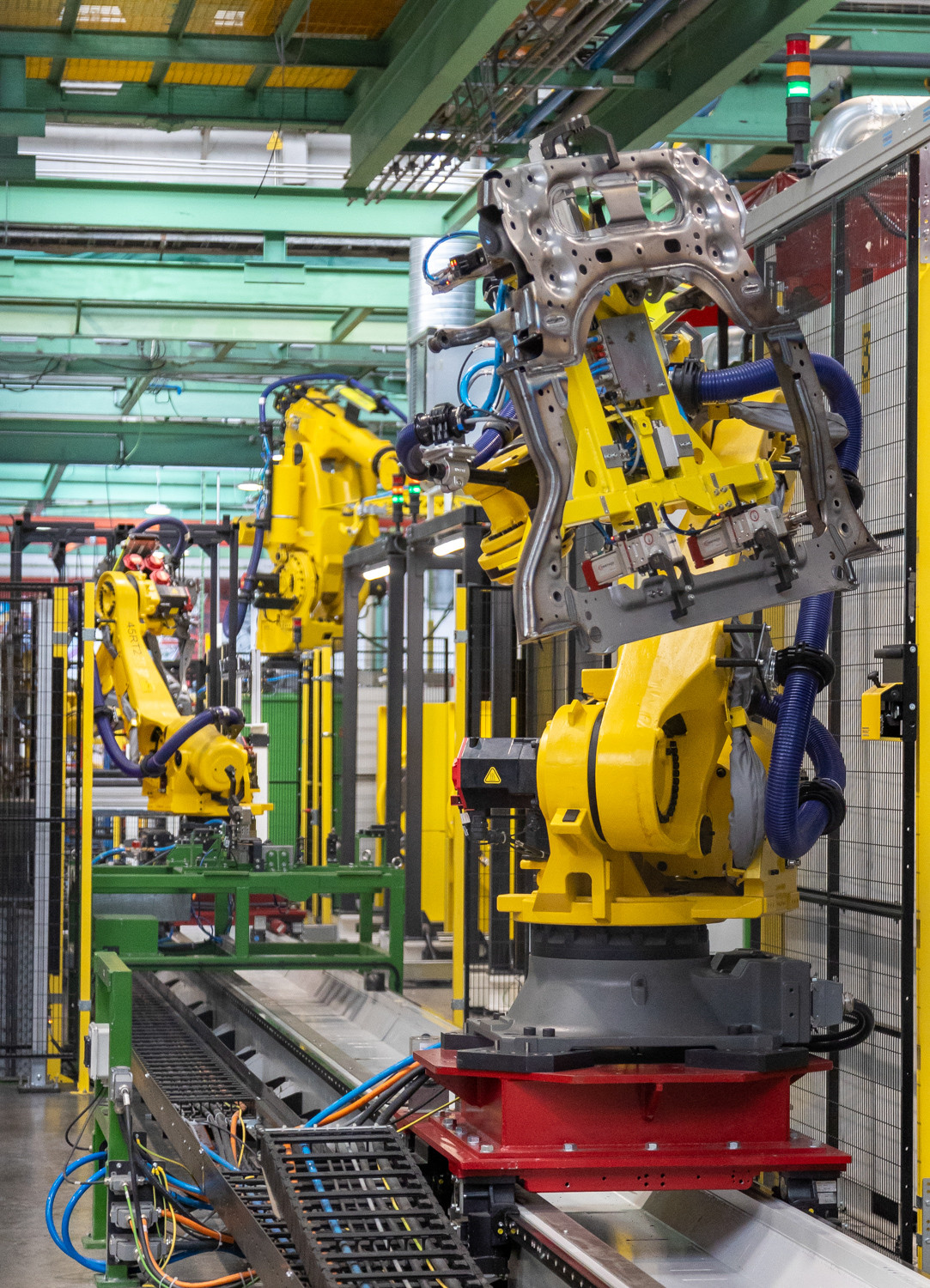
process for polypropylene bumpers for replacement of Nissan and Renault is carried out on the same new line, with a capacity of 200,000 units per year. This line of work includes die-cutting operations and storage
of between 75 and 100 molds. González comments on the processes of receiving pellets in containers internally called octavines due to their octagonal base. “We carry out drying and injection processes, with special mention to the homogenization of refrigeration to ensure the highest level of quality.” The manufacturing process of replacement bumpers is fully synchronized with the packaging area with packaging of Nissan Ávila's own design specific for each bumper model.
Welding and painting of metal parts
Once the metal parts such as doors, hoods or gates have been stamped, in the Welding Area, the high degree of automation for spare and series parts stands out, in addition to covering various types of welding such as arc, spot, stapling, crimping. by hemming and even aluminum welding. All these possibilities are
articulated in six lines with an automation ratio of 91%. In this area, a flexible line stands out to house all types of references in a sequenced manufacturing model between stations with a high level of tool change
to achieve high productivity. It is also necessary to highlight the versatility when creating own tools and processes to optimize time and costs.
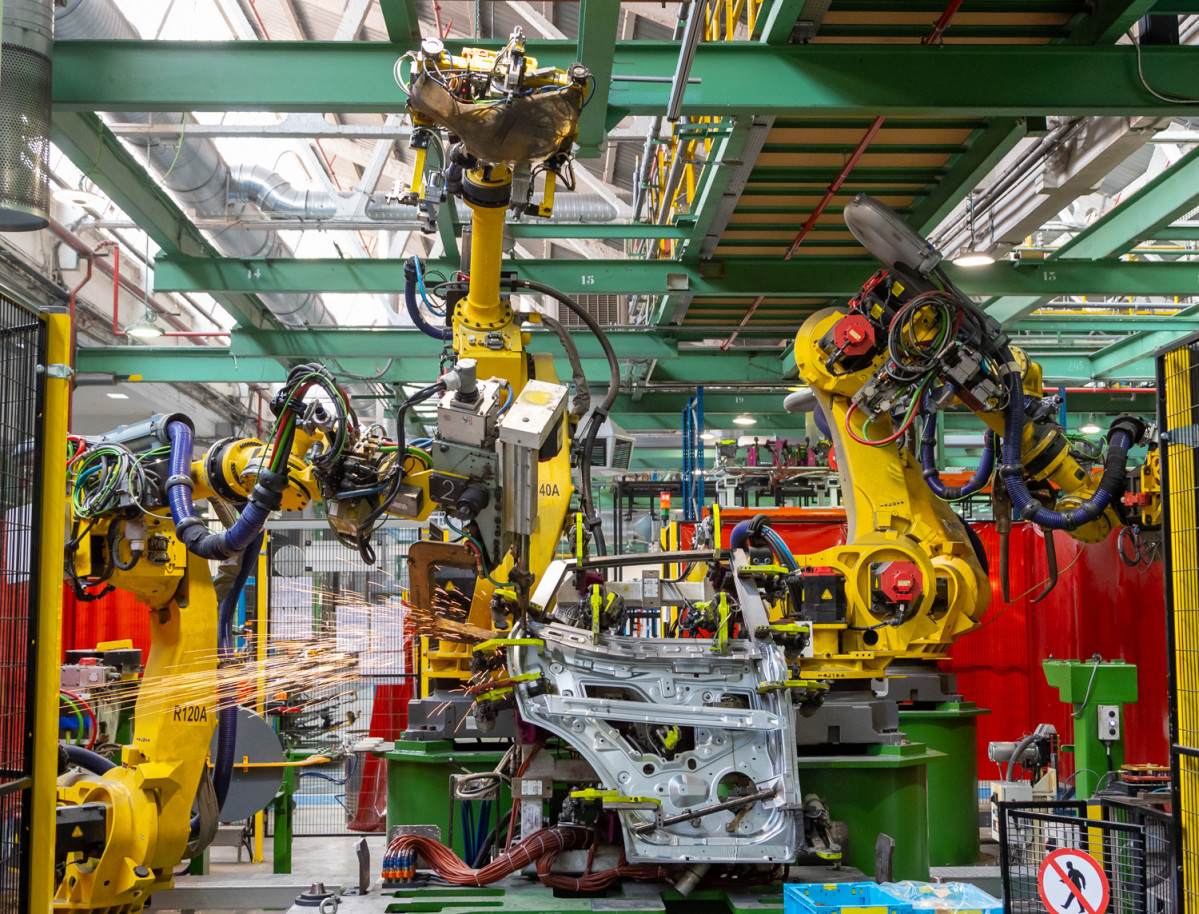
In this sense, a line of flexible arc welding cells for suspension parts has recently been installed with an overhead crane to exchange tools within a period of 30-40 minutes. Also a turning table with welding robots to change tools. Javier Amador González, responsible for Business Development, comments that “we develop unique solutions for very small batches with large tools. We are talking about our own developments of centering and clamps, with pneumatic and electrical connections through PLC control and RFID technology. Also a fully robotic flexible line with initial welding of the outer part of the metal piece (outer) and another interior structure cell (inner). Our self-developed claws allow the change of reusable welding machine appendages on different parts. We exchange tools using a hoist. We maintain a high level of automation to guarantee quality without duplicating process lines. In this area, a Tabletop line stands out, 75 meters long, through which the robot moves for welding operations.
The cataphoresis line for the painting process is completely automated in the different baths and operations and takes advantage of the know-how from the previous stage of truck manufacturing. The welded parts are moved to the original cataphoresis line, with capacity for one million parts per year, using AGVs, guided vehicles, which transport metal containers of their own design with holding appendages, so that the part does not leave the container. cage, during the cataphoresis and painting process. This process is synchronized with the previous stamping process and the subsequent packaging process.
Painting of plastic parts
Once the bumper has been injected, there is an option to ship it directly as injected raw material or to go through the on-demand and synchronized painting process. Javier Amador González comments that “we have a capacity of 50,000 units per year. Our process is carried out without stock and in a synchronized manner in the painting of bumpers for Nissan, Renault and Dacia models, positions change according to each sequence. After a first step of prior cleaning and monitoring of the pokayoke reference using a barcode, the area of the piece that is not going to be painted is masked and the rest goes through flaming stations (in the case of Renault), robotic priming of the (primer), lacquered and varnished. "It highlights the complexity of the color palette with three or four changes in each turn." The flexibility is evident in the self-developed supporting structures ('spiders') that hold and move the bumpers in the different operations before entering the oven, where they are subjected to a temperature of 80 degrees for 20 minutes for the varnish polymerization. Once the piece leaves the oven, a first inspection is carried out to detect defects, with sanding and polishing operations if necessary, before individual pre-packaging, bubble wrap with nonwoven to avoid scratching the varnish. Identified with shipping label. Traceability at all times. Flexibility change of spiders, tests with heel pads. All in-house, own developments. “The line adapts to the requirements of its current customers but is prepared to respond to other OEMs. The most popular colors are pearl white, black and dark metallic gray,” says Víctor González.
The Plastic Parts Painting Area has an adhesion, thickness, colorimetry and gloss meter testing laboratory, with the same criteria as the customer's vehicle production plant.
Global projection and new possibilities
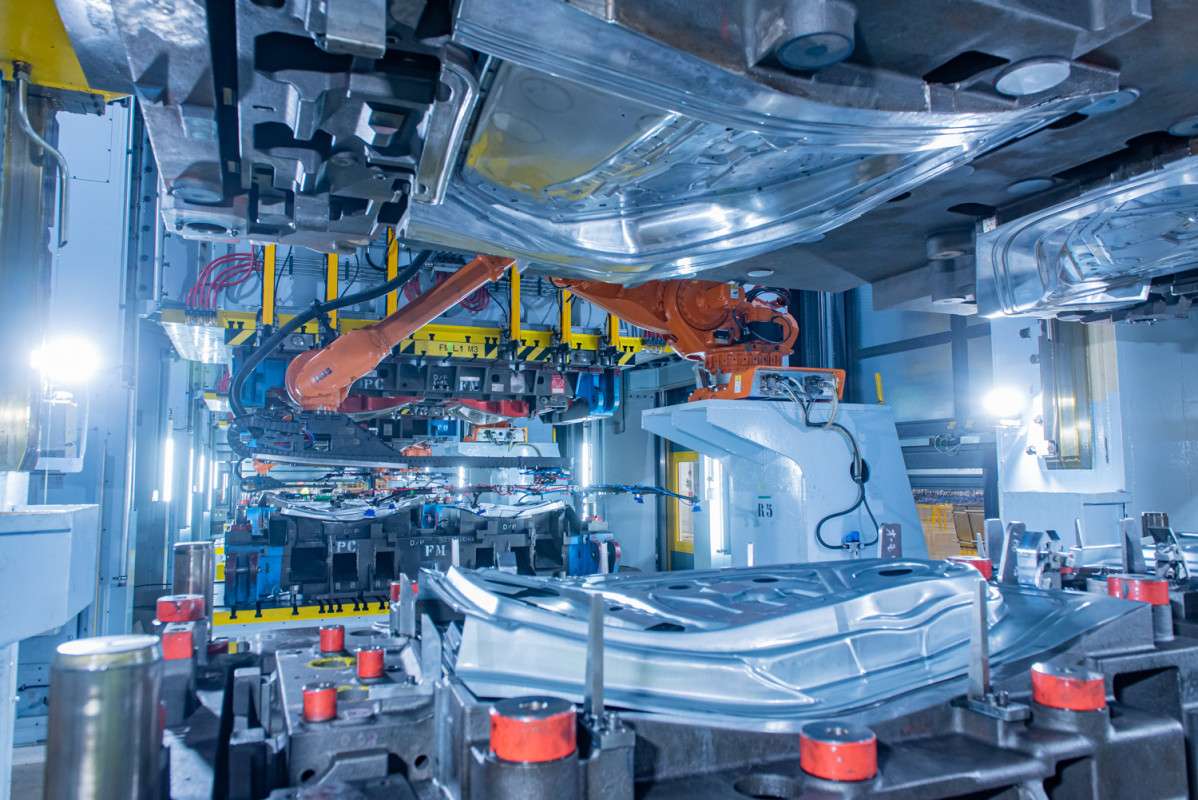
Nissan Ávila considers the packaging “as another part of the piece. For this reason, we design and manufacture our own packaging and containers, while we make design proposals to our clients, although we also adapt to their specifications, as in the case of Nissan's wooden containers,” says Javier Amador González. Within Nissan's strategy, González explains that "we make multi-destination supplies to Nissan's logistics centers in Barcelona, Amsterdam (where the storage and dispatch of spare parts is centralized at the European level), as well as to countries such as Italy or Romania, and to communities. Spanish like Castilla y León, with examples like the Renault plants.”
A singularity of global projection that could be extended to new metal components with which they are testing in the welding area or injected plastic parts such as heels, as well as replacement kits for body and wheel parts, or sets ignition key. For the production of series components, we work on covering parts for electric vehicle areas and suspension components.
Lea este reportaje en castellano
Article published in AutoRevista 2.387

La Asociación Nacional de Fabricantes de Automóviles y Camiones, ANFAC, ha presentado, en la mañana del 10 de julio, su Informe Anual.

Profesionales del primer nivel de las empresas de la industria de automoción y movilidad se han congregado en una jornada organizada por CEAGA en Vigo para ofrecer a los líderes del sector una visión práctica y multidisciplinar que les permita anticiparse y responder eficazmente a los desafíos del entorno.

SERNAUTO ha publicado su memoria de Sostenibilidad 2024, en formato Informe Integrado, que constituye un análisis exhaustivo de la actividad, aportación de valor y papel activo de la entidad como portavoz del sector.

La planta de Stellantis en Melfi (Italia), se equipará con la nueva tecnología PixelPaint de ABB con pintura monocapa de Nippon Paint para crear la pintura bitono del nuevo buque insignia, el N°8 de DS Automobiles.

El fabricante francés anuncia el modelo que se fabricará en Curitiba (Brasil) y Bursa (Turquía).
